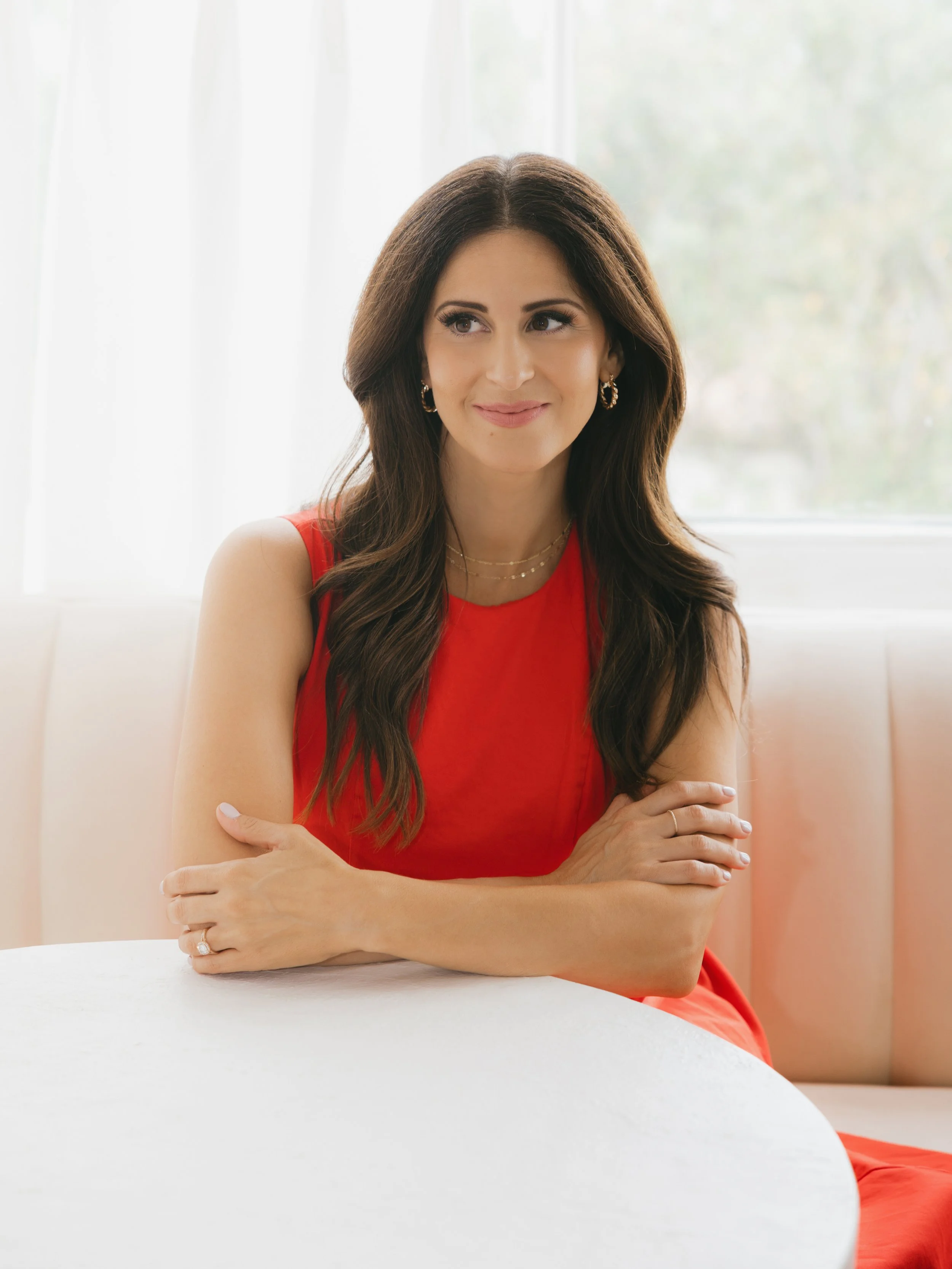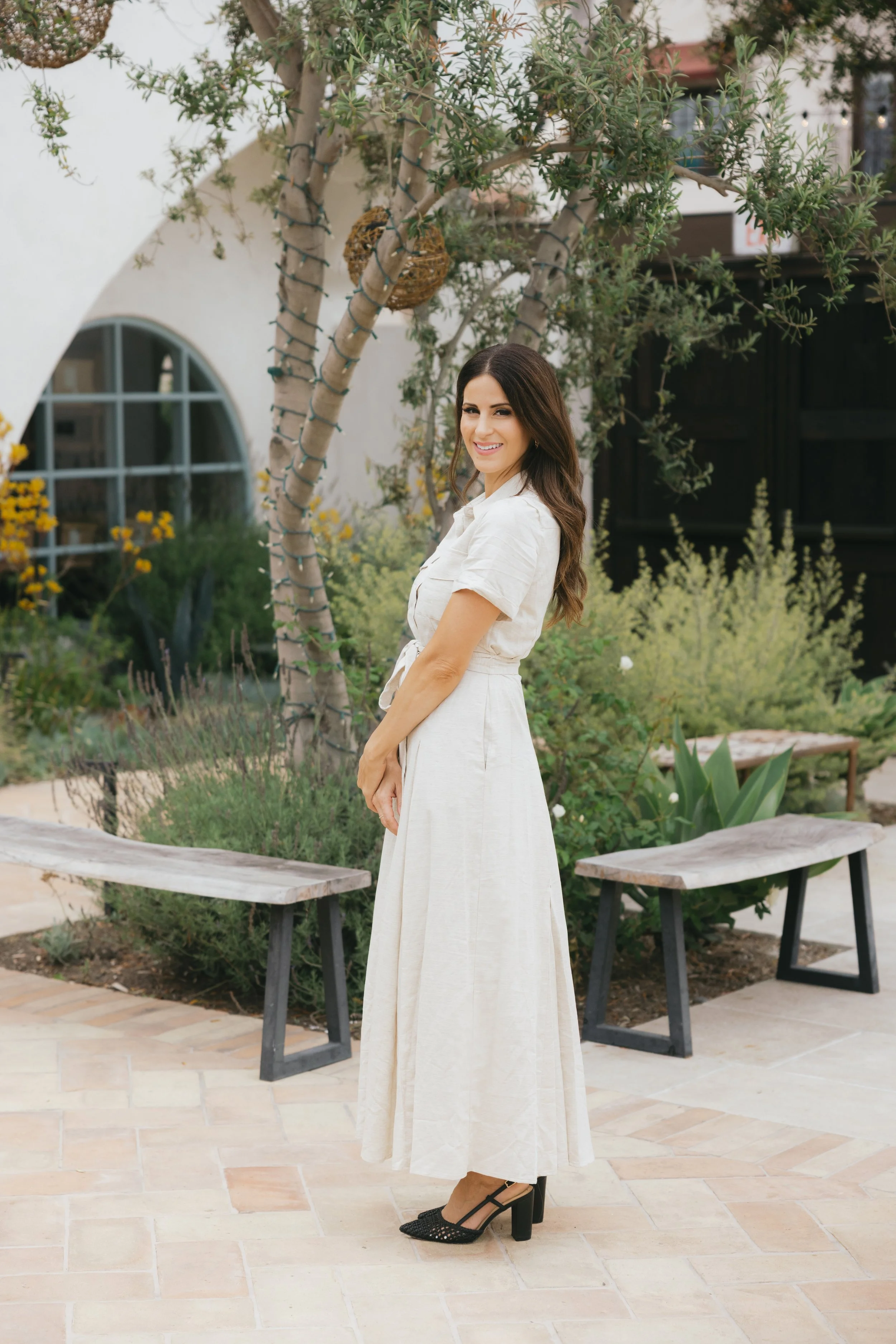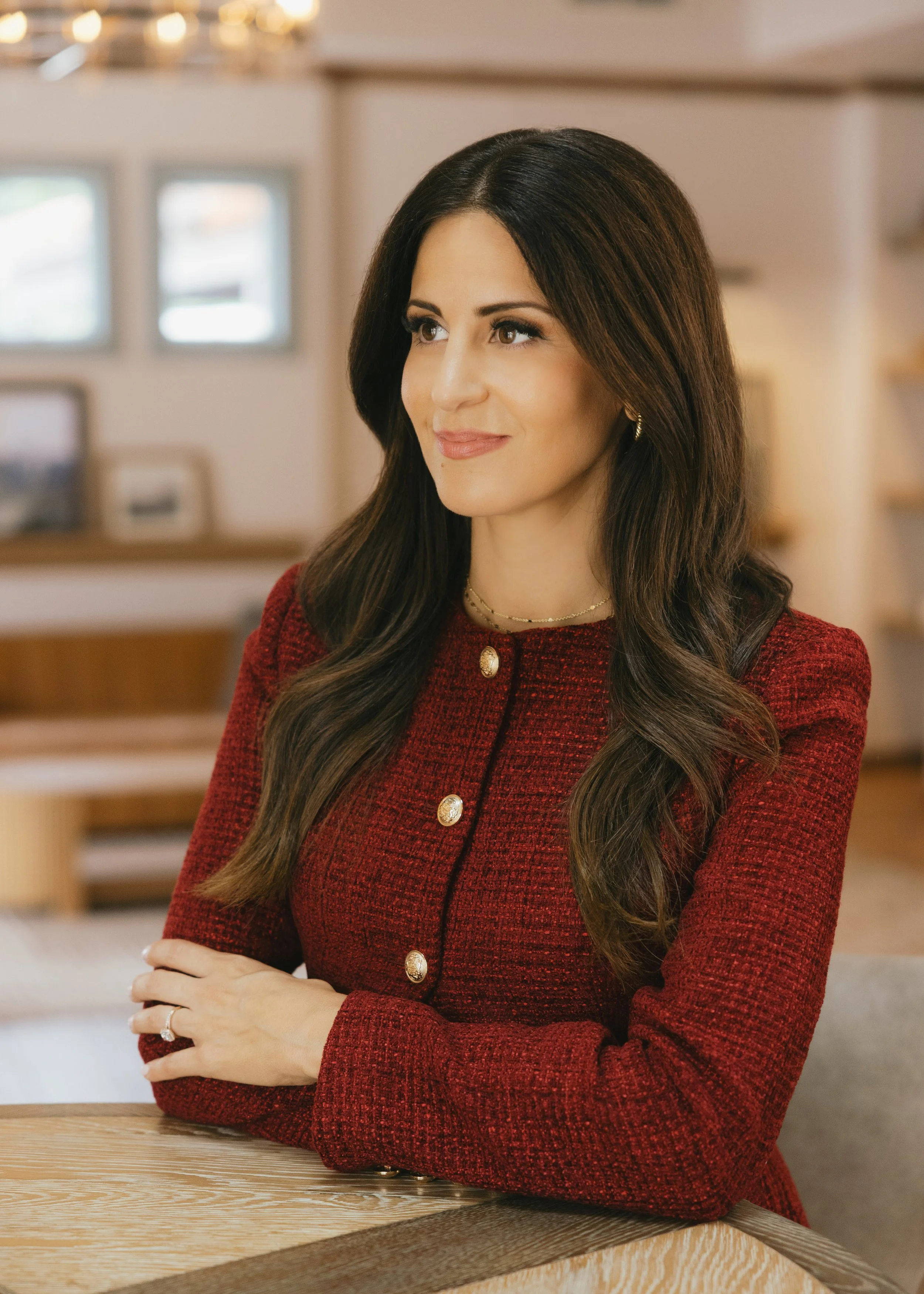When Lila Rose Met President Trump
By Emma Foley
Photography by Christina Cernik
Only weeks before the 2024 election, Lila Rose found herself sitting across the table from President Donald Trump. It was the culmination of two decades of advocacy for the unborn. This was her chance to convince him of the political urgency of protecting babies in womb. What was meant to be a brief conversation lasted two hours.
Over the last 20 years, Lila Rose has become one of the most formidable defenders of life. As founder and president of Live Action, she’s been a powerful voice for the voiceless. And while Trump’s attendance at the 2020 March for Life in Washington, D.C. marked a turning point for the movement, he inherited a political coalition that was fractured on what was once a non-negotiable for Republicans for half a century: enshrining into federal law the fact that life begins at conception.
Rose saw there was a delicate balance between principle and political prudence. She knew that speaking publicly against the Trump-approved platform could risk her involvement in future high-level discussions on family policy. There were many outlets and organizations who celebrated the Dobbs decision, which overturned the precedent of Roe v. Wade that had innovated a constitutional right to abortion. They chose to sit this particular debate out.
But Rose refused to be complacent. The GOP’s big-tent position, though easier to digest in today’s culture, trampled on the 14th amendment.
“Without the right to life, no other rights are possible,” Rose explained. “Good luck with other freedoms or securities. Children have to come first.”
I asked if she feared taking such a bold stance for life amid the capricious political current. Rose replied without hesitation: “No.”
There’s this idea in politics that the pro-life voter owes a Republican politician a vote because their proposed abortion policy is relatively less abhorrent than that of his/her opponent. In Rose’s view, the pro-life voter shouldn’t have to choose between the lesser of two evils.
“Without some indication that they will work to make our nation a safer place for preborn children, they are making it impossible for pro-life voters to support them,” Rose posted on X.
Shortly thereafter, Rose received a request from the campaign to meet with Trump one-on-one. Rose got in touch, and they granted her an audience with the president, whose mind she hoped to change. The pro-life movement has been an uphill battle, and Rose spent many years in the trenches. Those years prepared her for her meeting with Trump. How did she get to that moment? It all started at the age of 12.
Rose grew up as one of eight siblings, all homeschooled in California. Her first encounters with the pro-life cause were at her local pregnancy resource center where she often volunteered with her grandmother.
The catalyst experience was when she read a book on her parents’ shelf titled, A Handbook on Abortion by Dr. Jack and Barbara Willke. The first of its kind, the Handbook showed images of real miscarried and post-abortive babies taken by real doctors. It sold 1.5 million copies in the two years before Roe v. Wade.
“You can see little tiny faces,” Rose recalled. “You can see arms and legs— ripped apart in these violent first trimester suction abortions. Though [the photographs] are grainy and older, you can see very clearly the humanity of these babies.”
“And that broke my heart,” she concluded.
In her book, Fighting for Life, Rose described turning each page as if she were “on the brink of an important discovery.”
She told The Conservateur, “I wanted to learn more about why this was happening, how it was happening. I wanted to do something about it.”
Live Action began in her parents’ living room, when she was only 15 years old. It would one day become the leading global pro-life nonprofit. When Rose entered the University of California, Los Angeles, her vocation became clear. She established the pro-life student magazine on campus, The Advocate. As early as freshman year, she began investigating the abortion industry. She started with her school’s student health center.
Rose walked in, claiming to be pregnant. The advice she was given showed a deep cultural indifference to, if not contempt for, life.
“They told me about how embarrassing it would be to be a mom on campus, how adoption was like giving away a present, but how there were two abortionists they could connect me with and that they could find a way for it to be paid for by my parents’ insurance without my parents even knowing,” she said.
Rose felt that more people needed to know what was going on inside so-called women’s health centers, especially in America’s top colleges. She looked to history as her guide. She studied the abolitionist movements in Great Britain and the United States, where reformers used searing images to lay bare the cruelty of the transatlantic slave trade: coffin-like boxes crammed with captured Africans for the voyage to the New World. She recalled the maimed back of “Whipped Peter,” photographed by Mathew Brady in the 19th century, his deep, permanent scars that told a story that no words could match. She pointed to the Industrial Revolution: to Lewis Hine’s photographs of children maimed in factories. These were carried into New York polite society, sparking outrage. But it was those images, Rose noted, that helped ignite a movement to end child labor.
In the pro-life movement, Rose concluded, “it is essential for us to show the victim.” Legalized, mainstream violence against children today is happening behind closed doors, in the womb. Live Action exposes abortion’s unseen victim, no matter how unsettling the image might be for the public.
The organization’s undercover investigations have exposed sex-selective abortions of preborn girls, the sexual abuse of minors, sex-trafficking, the acceptance of racially-motivated donations, and complicity in infanticide, according to the Live Action website. Through compelling video, audio, and print storytelling, Live Action receives 50 million impressions across media platforms every month.
Rose painted one more picture— that of a mother, fighting for her baby, heroically loving her child— “the ultimate feminine image.” Modern culture has inverted this image. It tells the woman to fight against her baby.
“Her baby is the combatant, literally, against her,” she said.
Like her own mother and grandmother before her, Rose rejected this distortion of femininity and instead answered the call of motherhood. She welcomed with her husband three children into the world (+1 in Heaven). A convert to Catholicism, Rose said that loving her children is loving God. “I get to love my baby, this beautiful, totally innocent, adorable human being. It’s just a delight, right?,” she said.
Rose wanted to package this love into the form of a show, to share with listeners all over the world. In 2023, she launched The Lila Rose Show as part of her new company, GTB Media (the “GTB” stands for “goodness, truth, and beauty”). Rose seeks to emphasize human purpose and identity in her interviews with leaders in science, medicine, faith, and politics. In 2024, Catholic media conglomerate EWTN scooped up The Lila Rose Show, licensing it as part of its streaming service. Also available on YouTube and podcast apps, it remains one of the fastest growing shows in conservative media.
“I leave my interviews in this little studio so energized,” Rose shared with her listeners after the first year of her show. “Usually, I go right back to my boys, my priority. Hanging out with them, I’m smiling, so happy because I just had the opportunity to sit down with someone and have… an uplifting, encouraging, or informational conversation.”
In return, motherhood reminds Rose why she leaves home for work everyday— why the war against abortion matters. Every policy debate, media appearance, or undercover investigation is about protecting someone else’s son or daughter from the violence she has dedicated her life to ending.
“Hopefully by the time [my children] are old enough to see [my work],” Rose hoped aloud, “we will have vanquished most, if not all, of the abortion industry. It can be part of the historical record.”
It was this aspiration Lila Rose carried like a banner to the meeting with the president last year. “President Trump had kind of a mixed posture,” she divulged. “He seems to vacillate on it.”
Calm and collected, Rose delivered timeless moral truths, all consistent with what she distributes daily across her media channels. For Live Action to remain both competitive and winsome, it required twice the effort and moral clarity of its counterparts. Rose was battle-tested for this moment. She emerged from the meeting confident that progress could be made with a second Trump administration.
Sure enough, then-nominee Trump went on to speak against the passage of Florida’s dastardly “Amendment 4.” He cooled off commenting on statutory measures, and his team kept a relationship with Rose to discuss IVF policy and fertility education. Most notably, Trump later signed the bill defunding Planned Parenthood. Between that and adding to the Supreme Court a conservative majority that would later reverse Roe, Trump solidified his White House as America’s most pro-life.
“He’s willing to play ball with pro-life to a degree. And, so, we obviously chose to play ball,” Rose said.
Part of the reason Trump was so willing was because he sat across from one of the most persuasive pro-life titans of our lifetime. A mother and a heroine, fighting for the life and dignity of every unborn baby.
Emma Foley is a Content Manager at National Review in New York City. Originally from Pennsylvania, Emma earned a degree in Marketing and Theology from Boston College. You can follow her @emmafoleymedia.











